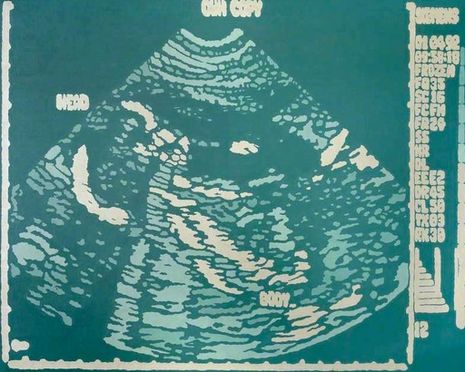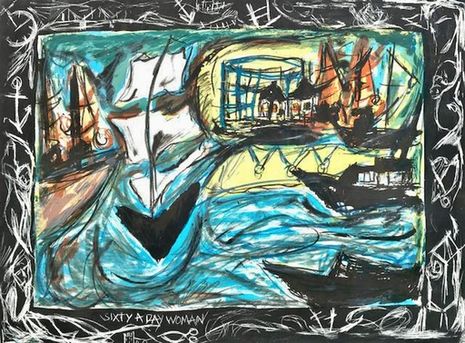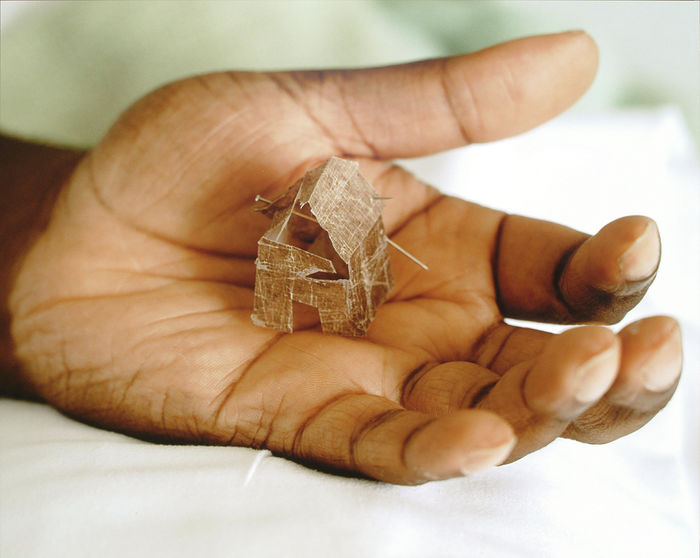Dive into ‘Women and Water’ at Murray Edwards
Murray Edwards’ new exhibition examines memory, motherhood and the female experience through the lens of rushing water

Seductive sirens, dramatic drownings and girlish nymphs have long defined the artistic history concerning women’s relationship to water, these biased, gendered myths and tropes preventing their complex, nuanced and meaningful union from being justly explored. Spanning from the early twentieth century to present day, Murray Edwards’ new exhibition ‘Women & Water’ challenges these tired associations constructed between women and water, combining the work of 17 women artists in a thought-provoking and deeply resonant exhibit. Intent on defying convention and changing the narrative, associate creator of The Women’s Art Collection, Naomi Polonsky, has strived to include and explore the plethora of ways in which water can represent, and play a role in, a diverse variety of women’s lives.
"Seductive sirens, dramatic drownings and girlish nymphs have long defined the artistic history concerning women’s relationship to water"
On speaking with Naomi, she revealed that the inspiration for the exhibition came from a place close to home. Lying at the heart of the college, Murray Edward’s iconic architectural feature, the Fountain Court, plays an integral part of everyday student life and, for Naomi, it was the perfect embodiment of the exhibit’s theme and sparked her interest in women’s relationship with water. The fountain too played an important role in the exhibition itself. Situated opposite the gallery space, the glowing presence and frothing water bubbles of the fountain added great ambience to the exhibition, its pooling waters reflecting off the glass, causing a mesmerising display of ripples to oscillate across the gallery floor as visitors entered.
Whilst this watery, theatrical effect, may have been coincidental, every other detail of this small yet mighty exhibition has been carefully considered. From the fluid title font which mimics water droplets, to the soft blue painted walls and the port hole spotlighting, the design of the exhibition ensured that water pervaded every inch of the space; the works themselves were even hung to mirror the shape of a crashing wave.
Water is part of everyday life. We are accustomed to rain falling, rivers flowing and splashing puddles. To us, water is mundane and ordinary. However, the artists of this exhibit transform water into something which embodies meaning, power and emotion. For some, it is symbolic of new life and the passage of time. For others, it becomes their grief, trauma and pain.
"For some, it is symbolic of new life and the passage of time. For others, it becomes their grief, trauma and pain"
The exhibition’s exploration of these nuances of female experience begins with a work by Joanna Moss titled ‘Own Copy’, which portrays a single moment during the artist’s birth scan. Transforming the small, black-and-white clinical image into a large, brightly coloured painting, Moss amplifies the gravitas of this life-changing moment, capturing our attention by colourising and beautifying what would normally be a monotone scan. Water here is both the amniotic fluid which surrounds the baby, depicted in a network of marbled lines in various shades and tones of blue, but also comes to represent new life, the future, love and excitement.
Moving from birth to ideas of motherhood, British artist Eileen Cooper uses water to represent the struggles of being a new parent. Painted shortly after the birth of her second son, her work ‘Seasick’ depicts two women floating in a sea of expressive blue brushstrokes. The female forms, portrayed with primal humanity, are pulled in different directions, symbolic of Cooper’s own struggles with the conflation of her role as a mother and artist. Her emotional turmoil is implied by the tumultuous ocean which surrounds the figures, whilst a small boat, illuminated with a pool of white light, seems to remind audiences of the age-old cliché that ‘life isn’t always plain sailing.’

Whilst the swirling blue waves of Cooper’s composition relate to her new role as a mother, artist Tracey Emin harks back to her childhood, exploring her turbulent past through the depiction of an annual boat race near her home. A churning seascape engulfs a fleet of boats, their masts and sails ablaze, an explosion of pinks, oranges, greens, yellows and blues juxtaposing their jet-black silhouettes. Being the first print to ever be published by the artist, the loose spontaneity of Emin’s lithograph seems to reflect her young, reckless self. The print’s border, adorned with scratchy maritime illustrations, includes the work’s title ‘Sixty A Day Woman’, relating to Emin’s then partner’s remark about her bad smoking habit. The title lends itself to the idea of a representation of self, possibly suggesting that the piece has symbolic ties to the ups and downs of Emin’s adolescence and her struggles to discover her identity.
However, the artists in ‘Women and Water’ not only explore water through thematic conceits, they also experiment with its materiality, creating works that use water as their primary medium. Chloe Ho’s ‘Nature Embodied 1’ combines Chinese ink, spray paint, acrylics, and coffee to reveal a watery female figure. Reinterpreting the traditional genre of Chinese landscape art, Ho’s work is intent on capturing the primordial essence of being, the work integrating water symbolically and literally to act as a key to both life and artistic expression.
Defying the male-dominated realm culpable of constructing a biased relationship between women and water, Naomi ultimately aims to use the ‘personal and visceral’ theme of ‘Women and Water’ to showcase the multiplicity of female human experience in relation to the natural, life-giving source that is water. Alive with impassioned conversation and enthusiastic remarks, the exhibition, despite its modest size, gives audiences the opportunity to view the union shared between women and water in a new light, while giving them the space to reflect upon their own connections to water. So, as the seasons change and winter creeps in, what better way to spend a rainy afternoon than visiting ‘Women and Water’ and contemplating what water represents to you in your life.
‘Women and Water’: 7th Oct, 2023 to the 25th Feb, 2024
 News / Eight Cambridge researchers awarded €17m in ERC research grants27 December 2025
News / Eight Cambridge researchers awarded €17m in ERC research grants27 December 2025 News / Downing investigates ‘mysterious’ underground burial vault 29 December 2025
News / Downing investigates ‘mysterious’ underground burial vault 29 December 2025 Lifestyle / Ask Auntie Alice29 December 2025
Lifestyle / Ask Auntie Alice29 December 2025 Sport / Hard work, heartbreak and hope: international gymnast Maddie Marshall’s journey 29 December 2025
Sport / Hard work, heartbreak and hope: international gymnast Maddie Marshall’s journey 29 December 2025 Interviews / Meet Juan Michel, Cambridge’s multilingual musician29 December 2025
Interviews / Meet Juan Michel, Cambridge’s multilingual musician29 December 2025







